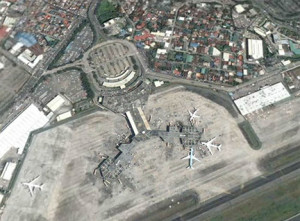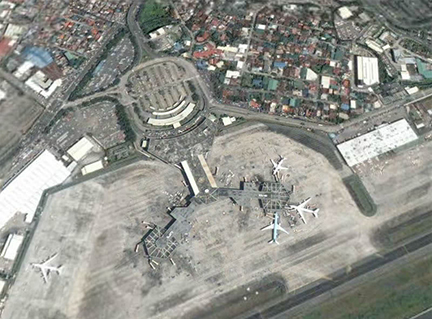
The government said it wants to open Manila to more foreign airlines as the country tries to better integrate with its Southeast Asian neighbors, and plans are afoot to build a second runway at the Ninoy Aquino International Airport to ease the congestion.
Transportation Secretary Joseph Abaya said the government is studying a proposal to ease air congestion at the NAIA by building a badly needed parallel runway.
“A second runway is almost a no-brainer,” Abaya said. “It seems logical even to (Finance) Secretary Cesar Purisima and even President Aquino himself…. Definitely it’s a quick fix to congestion.”
The Civil Aviation Authority of the Philippines said the government is going to construct a new parallel runway at NAIA estimated to cost P2 billion and to be completed in two years, an aviation industry news portal reported.
The parallel runways would be able to boost runway capacity at the airport from the existing 40 events per hour to 60 or 70 events, which would enable NAIA to grow its capacity to more than 40 million passengers a year, Philippine Flight Network reported.
The new parallel runway is intended for domestic flights and could accommodate aircraft as large as the Airbus A321 or a Boeing 737-900, the portal said.
The proposal, made by San Miguel Corp. president Ramon Ang, calls for the construction of a second runway within a period of 18 months. But its implementation can be tricky because it involves expropriation of land with an estimated 600 homes of informal settlers and private individuals, Abaya said.
It is not immediately clear how much the government will spend to expropriate the land.
Meanwhile at the World Economic Forum (WEF) on East Asia on Thursday, Secretary Purisima said the Philippines’ “pocket open skies” policy that opened up all airports in the country to more foreign traffic except for Manila is now in place. This after AirAsia chairman Tony Fernandes called on hold-outs like the Philippines to sign the multilateral open skies deal of the Association of Southeast Asian Nations (ASEAN).
Manila’s NAIA, made up of two perpendicular runways and four disconnected terminals, has been repeatedly cited as one of the world’s worst major airports.
The government has to successfully decongest Manila, the country’s main international gateway, if it wants to achieve its goal of tripling tourist arrivals to 10 million by 2016 from about 3 million in 2010.
Fernandes, one of the main crusaders for open skies in the region, called on countries like the Philippines to address barriers to the liberalization of the aviation industry.
He said while some countries have signed the Asean’s “open skies” deal, many of them still have hidden barriers.
The Philippine operation of AirAsia is targeting to stem losses by next year with early signs pointing to stronger ticket sales as the carrier expands routes, Fernandes said.
He told reporters “there was a chance” for AirAsia Zest to post a profit next year as they anticipate the airline’s takeover, now pending with the Philippine Senate.
AirAsia Zest is still controlled by Filipino businessman Alfredo Yao, who said he was open to selling his interests. The rest of the budget carrier is held by AirAsia’s local unit.
“We have had a few false starts but third quarter and fourth quarter sales have been very good, load factor for domestic is very high,” Fernandes said.





